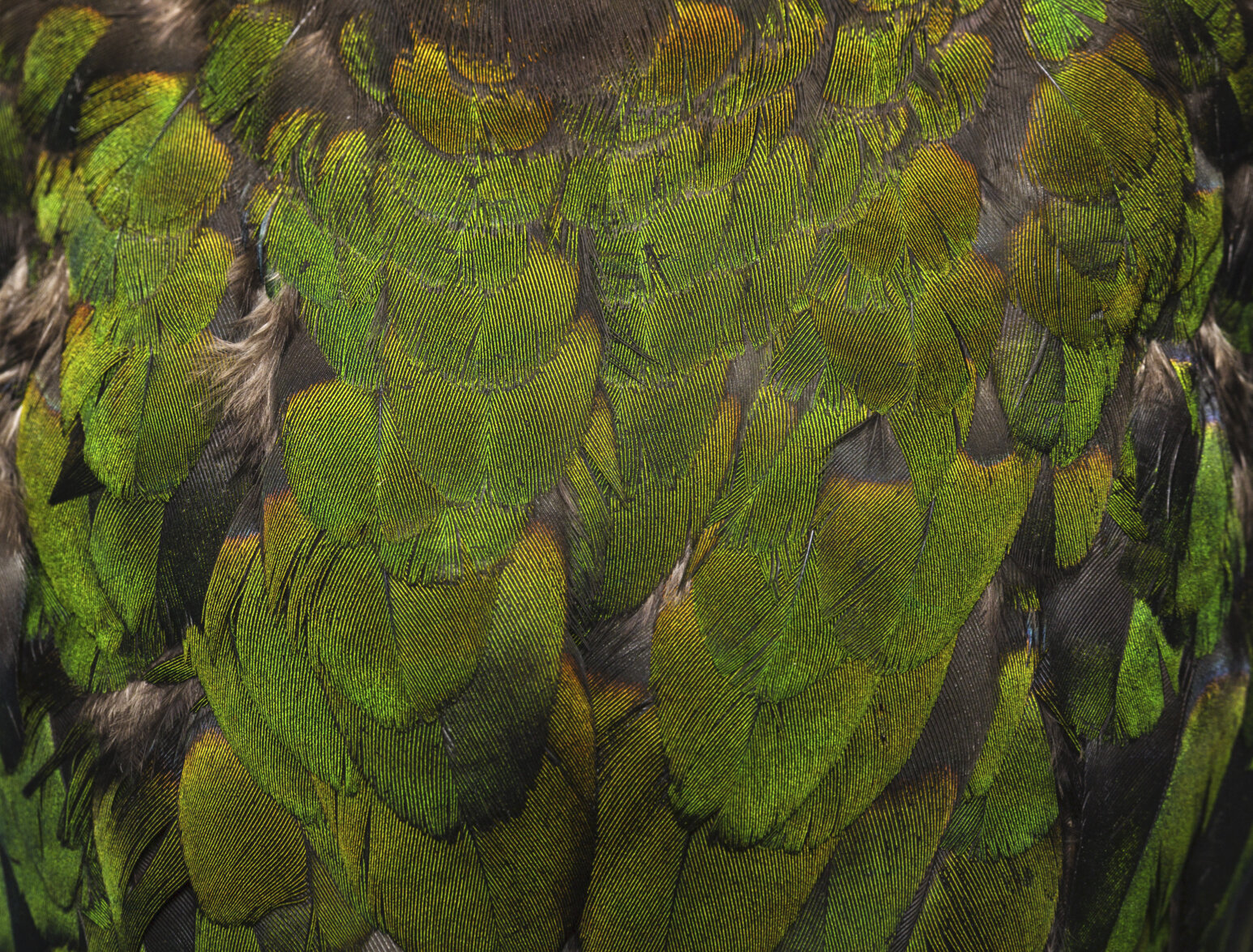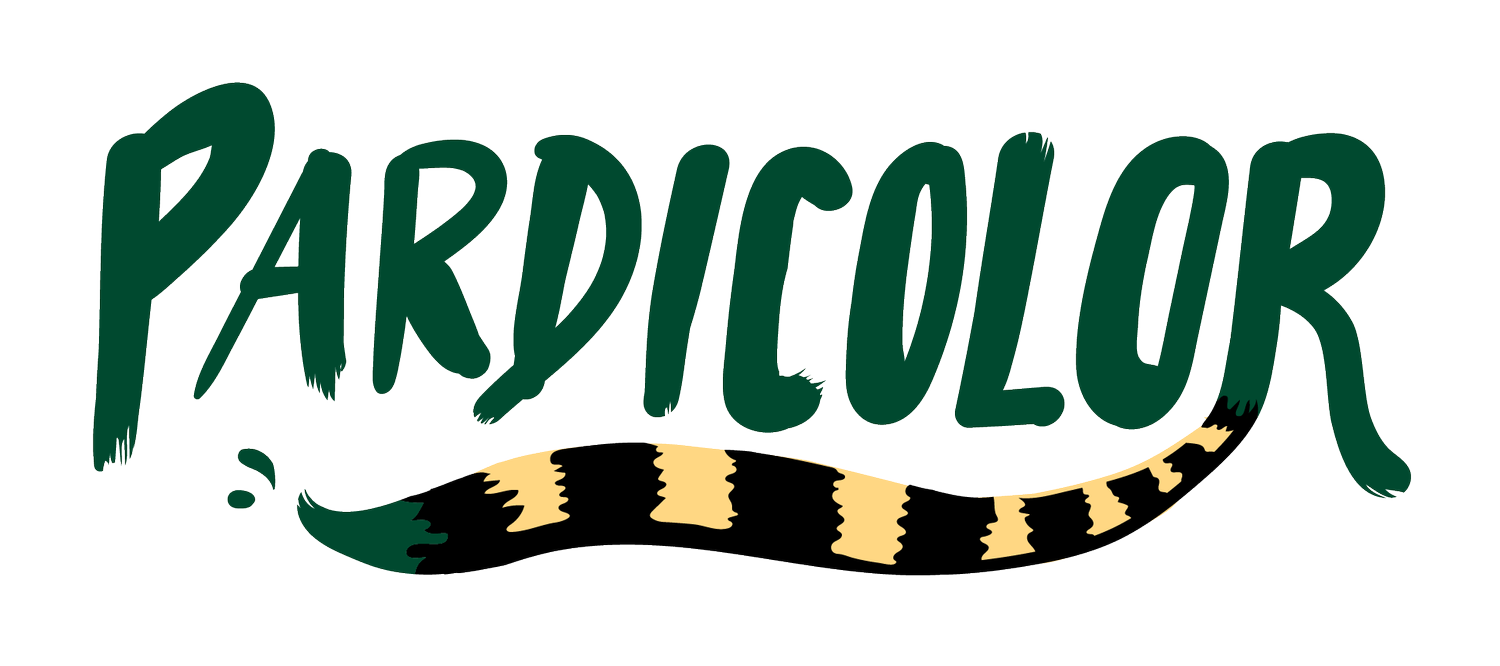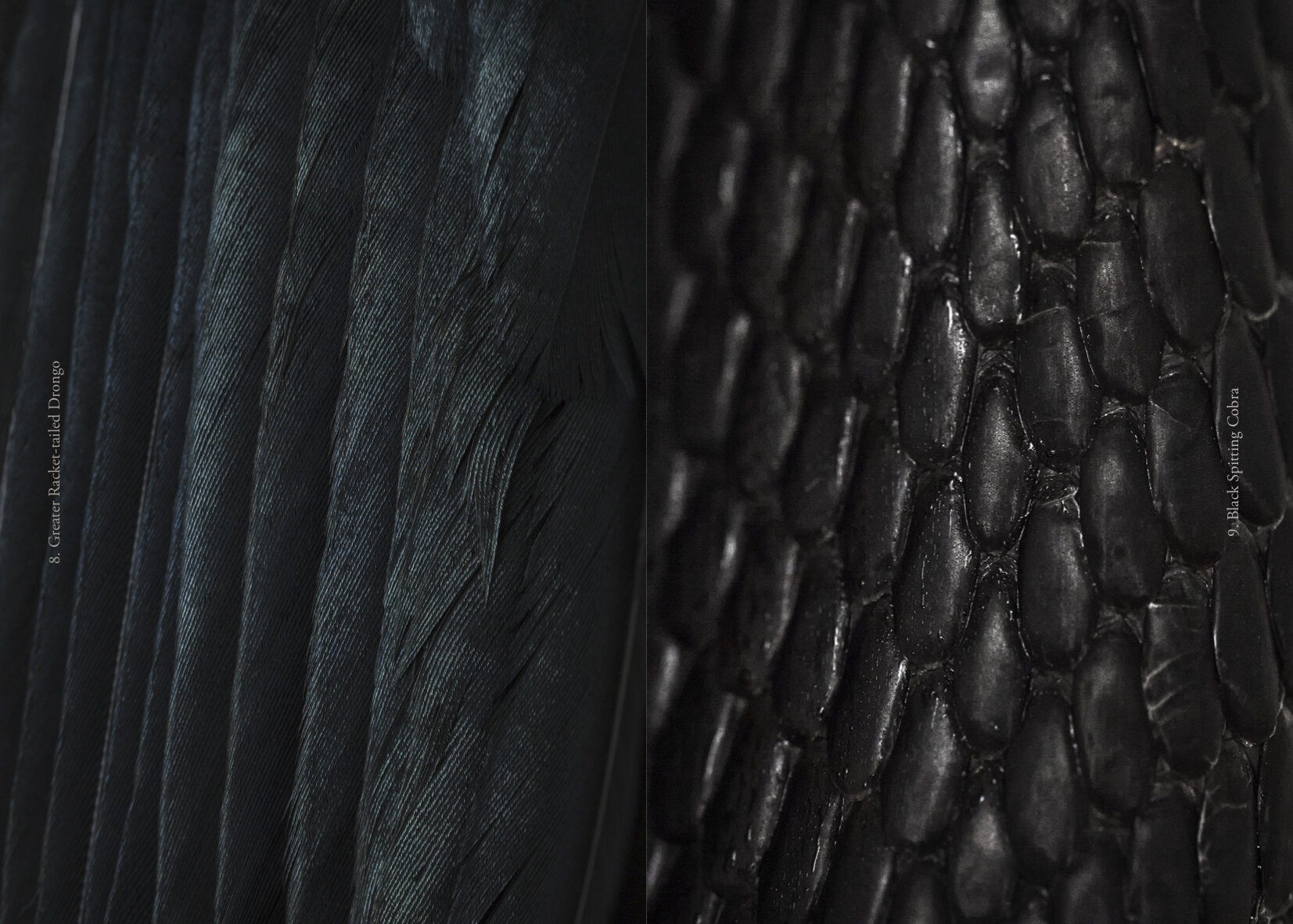
Part Two
6.
Masked Palm Civet
Paguma larvata
Although there are historical records of masked palm civets in Singapore, there were no verifiable sightings over the past
few years - That was until a roadkill was found in 2019. The national status is still ‘indeterminate’.
7.
Malayan Colugo
Galeopterus variegatus
These nocturnal gliding mammals rely on their cryptic colouration to camouflage themselves as they appear as lichen-
covered stumps on tree trunks during the day. They are capable of covering a distance of 100m in just a single glide.
8.
Greater Racket-tailed Drongo
Dicrurus paradiseus
The glossy black plumage and elongated outer tail feathers are distinctive features of a greater racket- tailed drongo.
These large drongos are known to follow long-tailed macaques and join other birds to forage for insects.
9.
Black Spitting Cobra
Naja nigricollis
Threat displays are often mistaken for aggression. The hissing, erected body, and expanded hood warns potential threats
to stay away. The venomous spit is only used as a last resort to defend itself from its tormentor.
10.
Rock Pigeon
Columba livia
Rock pigeons are not native to Singapore but are highly adaptable and hardy birds. Male and female pigeons are known
to pair-bond for life. They also have the amazing ability to find their way home, even from many miles away.
11.
Blue-winged Pitta
Pitta moluccensis
Blue-winged pittas are elusive birds and are prone to colliding into glass windows and structures during migration. They
can be easily mistaken for the globally near-threatened mangrove pitta as their feathers are very similarly coloured.




